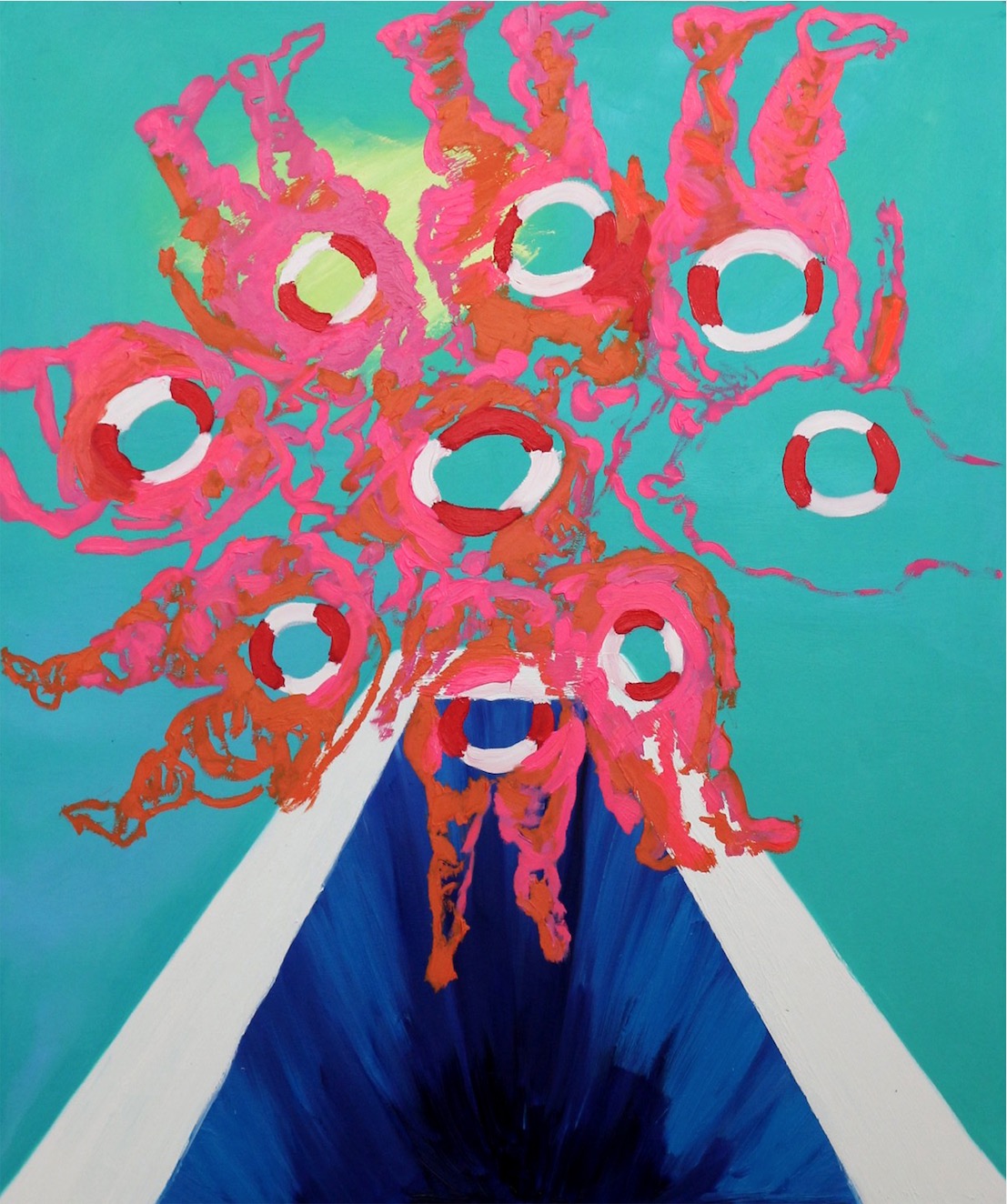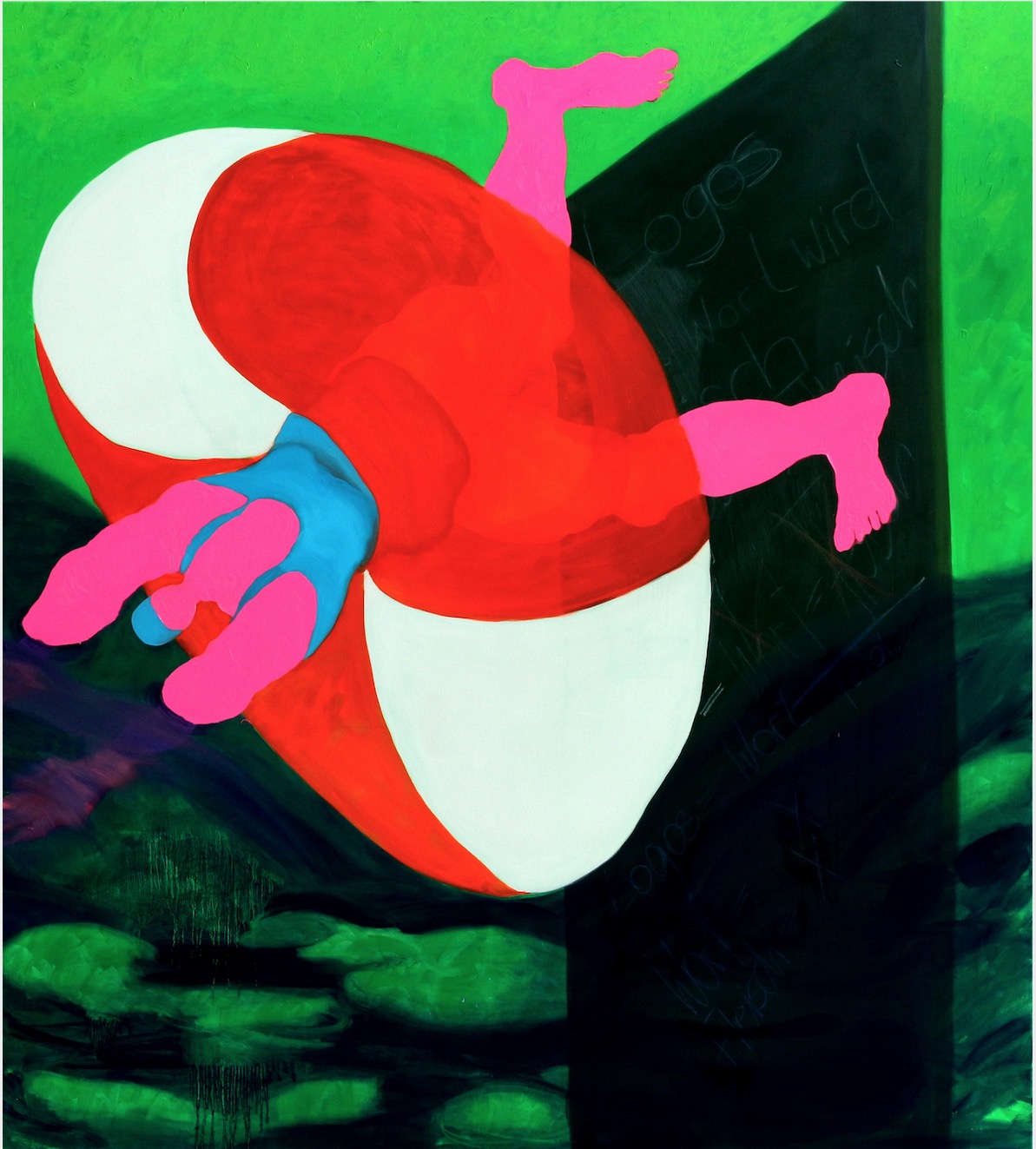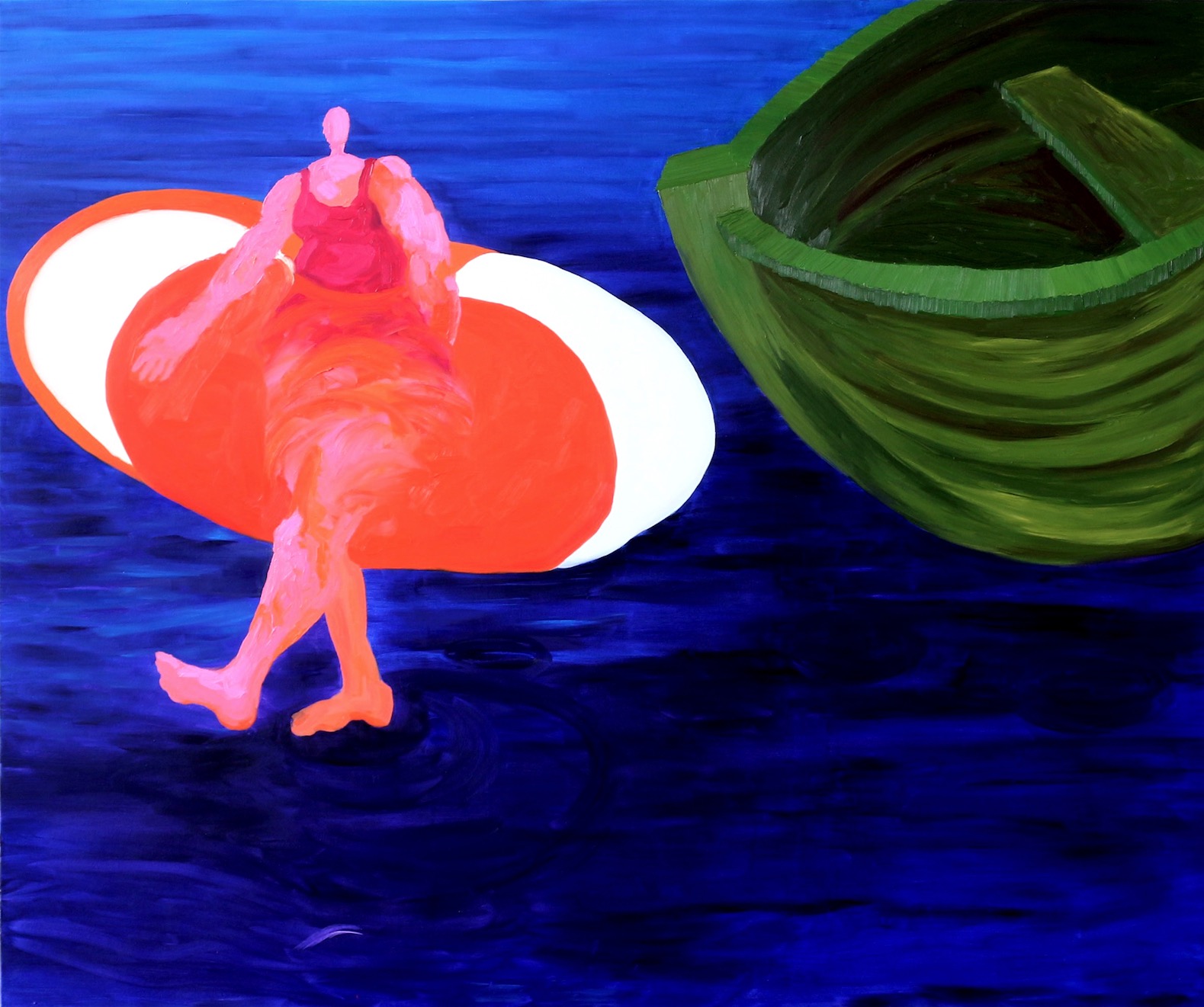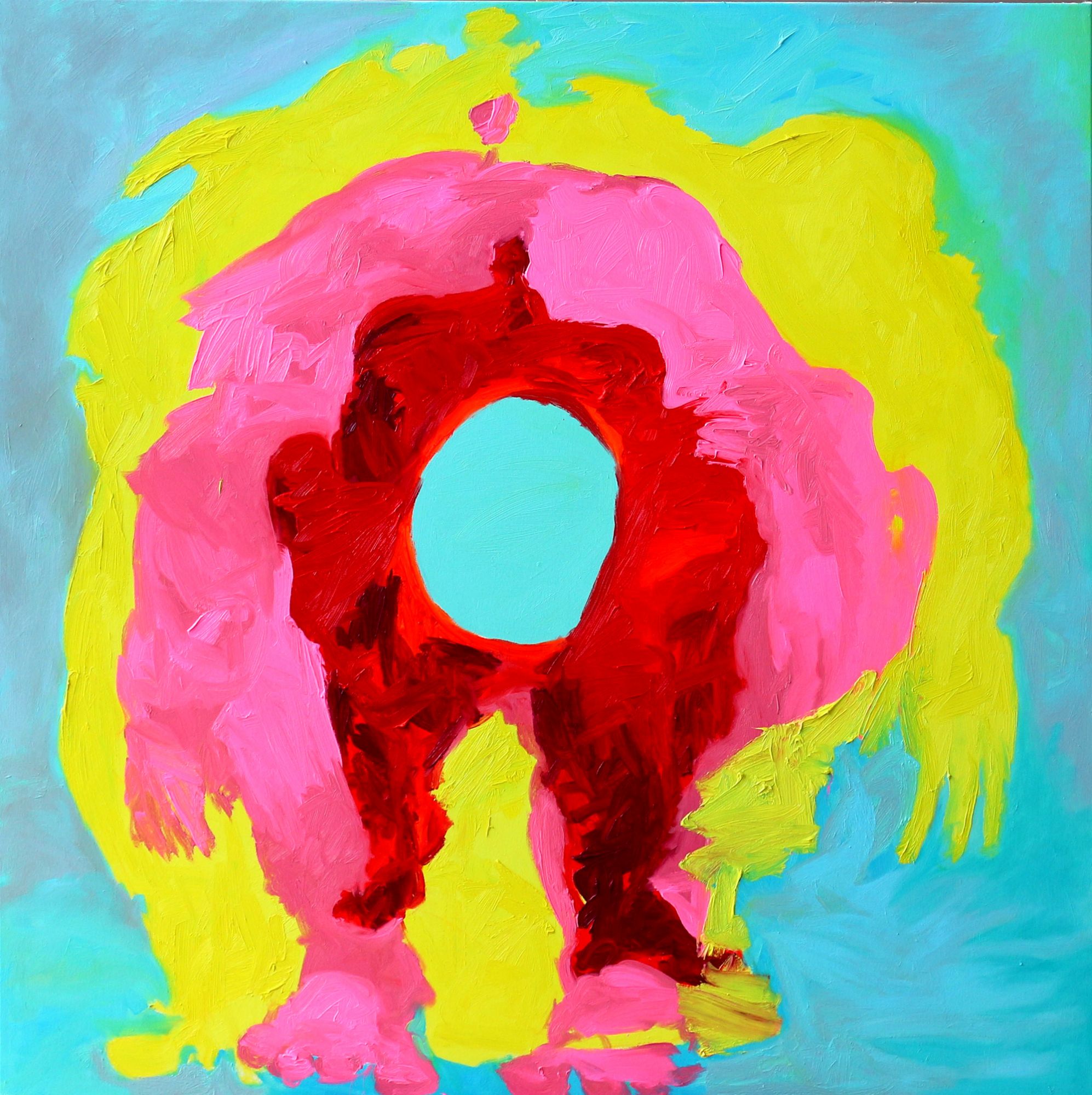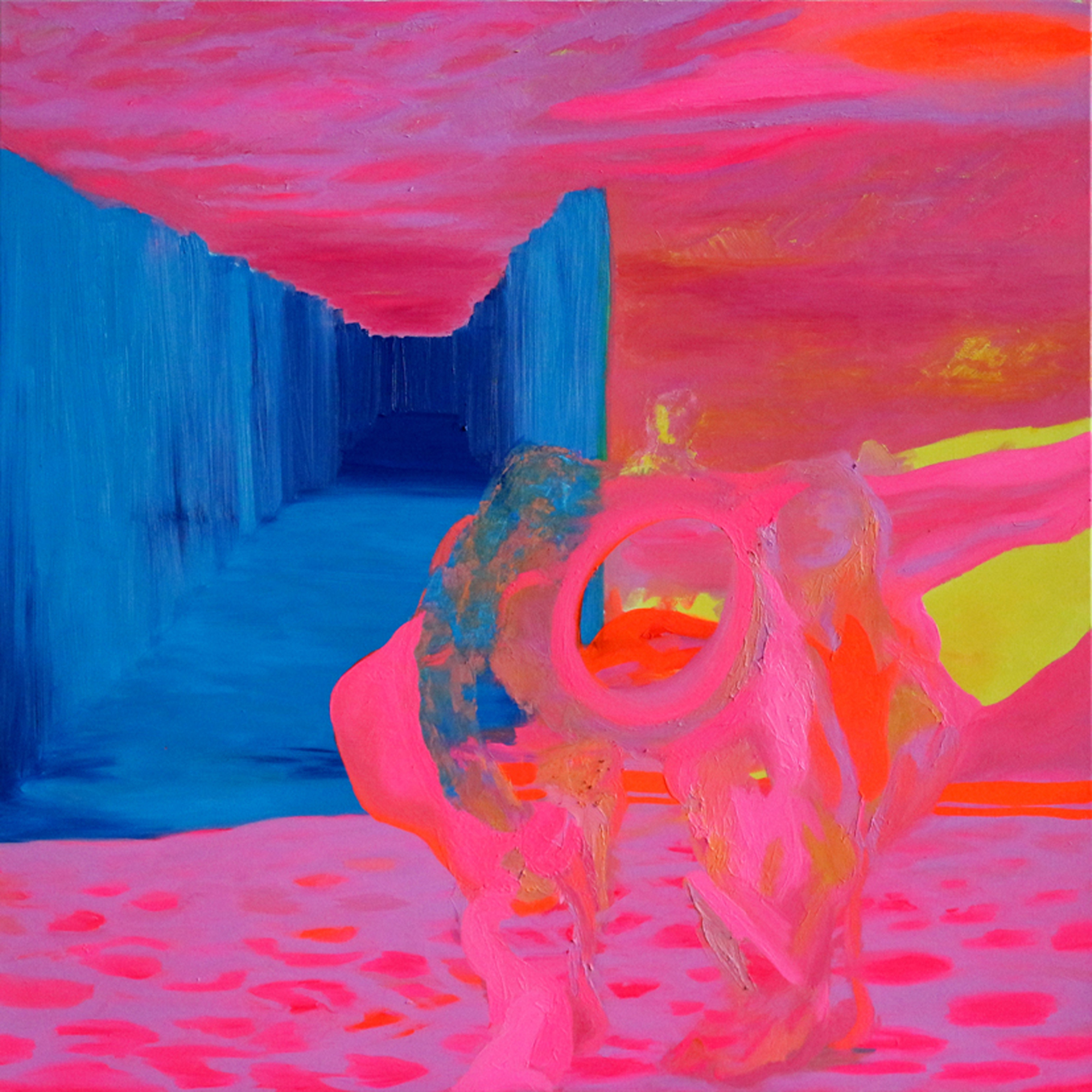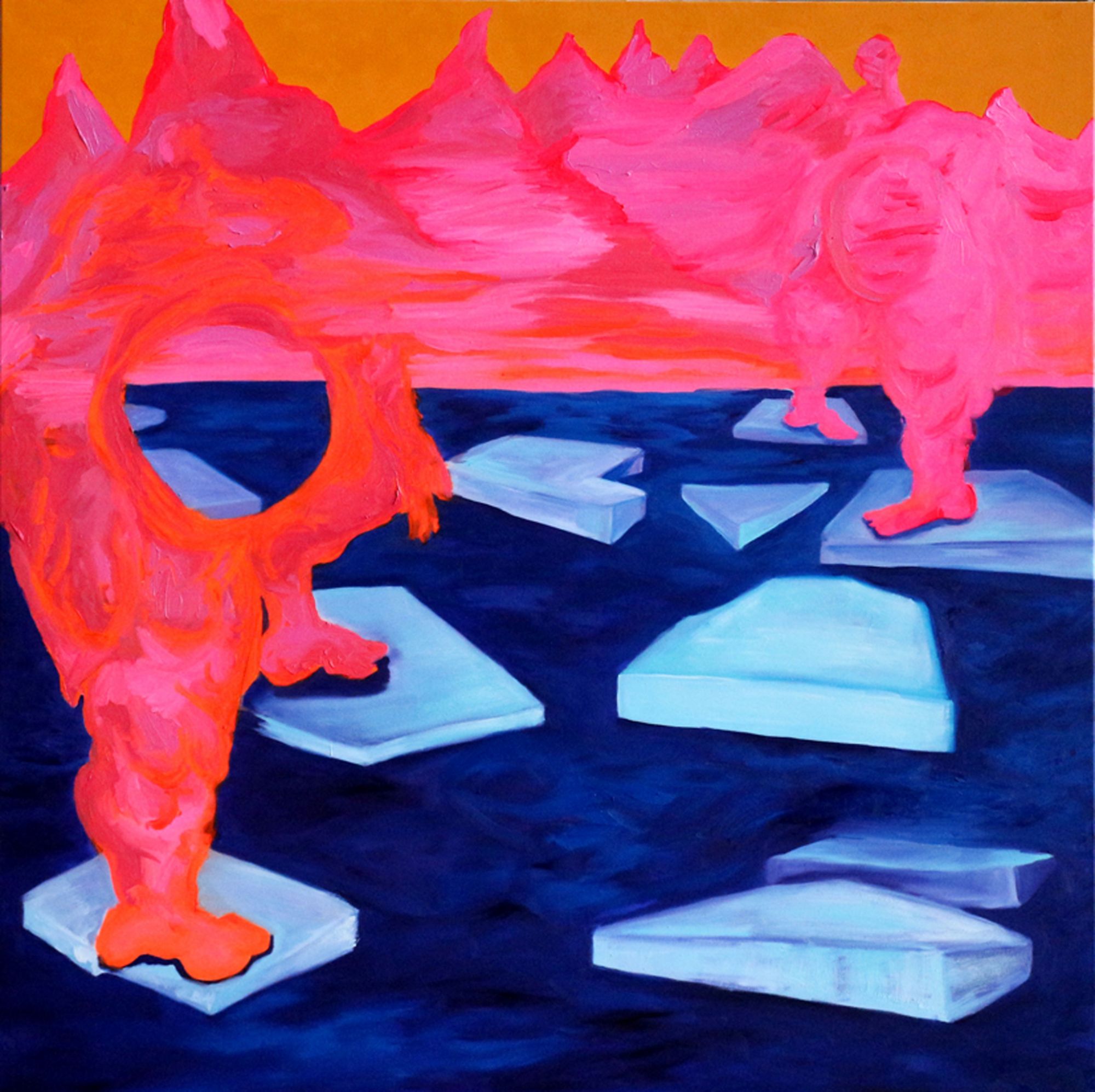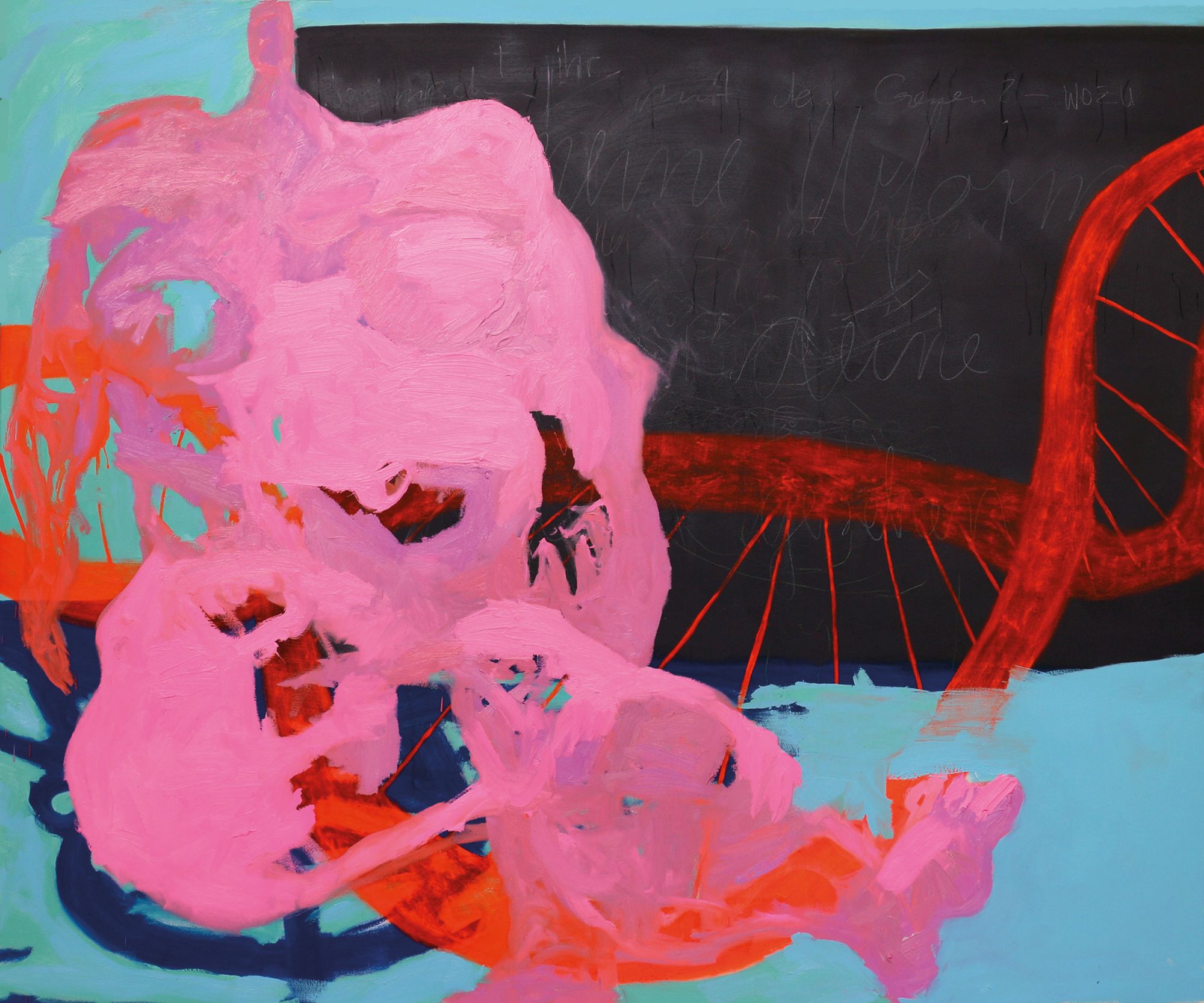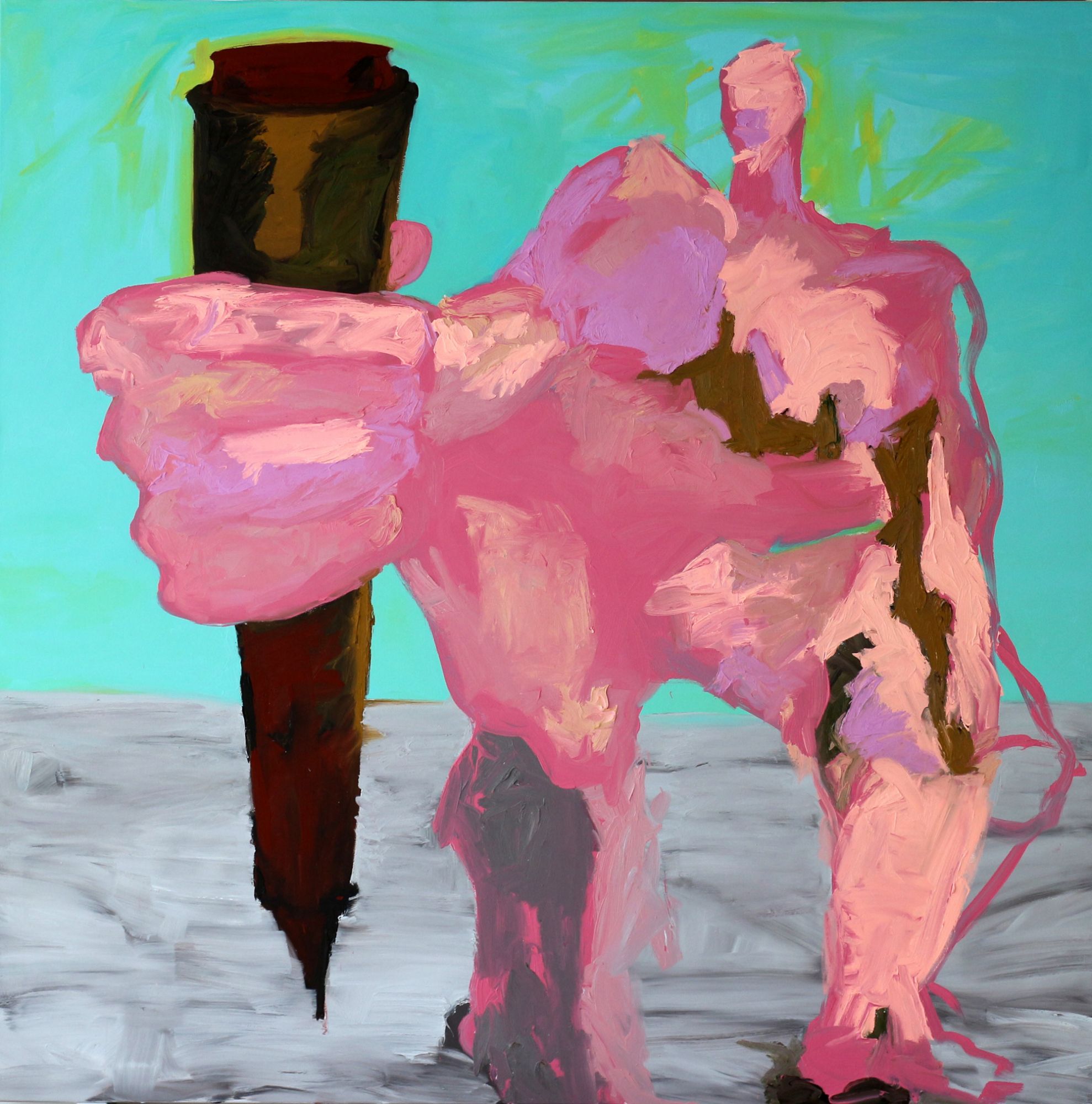short biography
Anna Huxel (geb. 1968 in Worms/Deutschland) schloss 2014 ihr Studium an der Akademie der Bildenden Künste Stuttgart mit Diplom ab. 2016 erreichte sie den Abschluss als Meisterschülerin im Weißenhof - Programm der Akademie der Bildenden Künste Stuttgart. 2015 war sie Gastdozentin an der Freien Akademie Mannheim.
email:
Huxel [at] yahoo.com
websites:
- Hold On, Gruppenausstellung Q-Galerie Schorndorf
- Alles Bio / HOLD ON / Anna Huxel
- Anna Huxel, Soloausstellung Frauenmuseum Wiesbaden
instagram:
@annahuxel
collection/s
2022
2021
2020
2018 / 2019
2016 / 2017
Vita
1996 - 1997 Stay in the USA (for one and a half years)
2009 - 2014 Studies at the State Academy of Fine Arts in Stuttgart
2014 Diploma in Fine Arts
2015 - 2016 Postgraduate studies at Weissenhof-Programme of Fine Art
2019 Membership of the Künstlerbund Baden-Württemberg
Accolades/Awards
2019 SV art award of the SparkassenVersicherung Stuttgart
2018 Guest lecturer at the Freie Kunstschule Stuttgart
2017 Nomination for the scholarship
Casa Baldi der Deutschen Akademie Rom
2016 Catalog promotion: LBBW Stiftungen, Stuttgart
2015 2. Price of the art award Human nature/Nature human, University of Heidelberg
Weissenhof-Programme of Fine Arts, State Academy Stuttgart
2015 Guest lecturer at the Freien Kunstakademie Mannheim
2014 Scholarship St. Moritz Art Academy, Workshop with Thomas Grünfeld 2012 Acknowledgment at Fotowanderausstellung „Wieder gesund“
Literature
2020 Catalog: Netzwerkerinnen der Moderne - 100 Jahre Kunststudium Hrsg. Corinna Steimel, Städtische Galerie Böblingen
Catalog: fünfundzwanzigjahreklassencordulagüdemann, Hrsg. Cordula Güdemann, Stuttgart 2020
Catalog: WORD FLESH, Hrsg. Anna Huxel, epubli, 2020
2018 Catalog: Exposition, Anna Huxel
Catalog promotion: Sparkasse Schwäbisch Hall-Crailsheim
2017 Catalog: Practice Process Progress, Hrsg. ABK-Stuttgart & Villa Merkel Galerien Esslingen, Stuttgart
2016 Catalog: Human nature/Nature human, Inspiration Wissenschaft, Epple Projekt GmbH
2015 Catalog: VI. Ellwanger Kunstausstellung, Kunstverein Ellwangen e.V.
2014 Catalog:Anna Huxel, aus der Reihe ARTISTS WRITING ABOUT ARTISTS, von Claudia Storch
*
Exposé
Theoretical Background and Painting
The foundation of my thinking is the biblical understanding that man is separated into mind, body and soul, creating a whole human being as these parts interact with each other. The mind is always in connection to God, an objectivity infusing the real world. The soul on the other hand corresponds with our reality, as it is shaped by what happened in our past. Rudolf Dreikurs says in his book “Grundbegriffe der Individualpsychologie nach Alfred Adler” that a child jumps to conclusions itself and thereby chooses a certain lifestyle guaranteeing him or her a safe spot in society. These decisions that are made subconsciously thereby have a certain motivation. If this subconsciously created finality emerges in the consciousness, it becomes irreversible. This makes it possible to set new goals which are oriented on an equal way of belonging in society. These new found convictions then influence our internal perception and thereby cause a new and different interpretation of reality. The body then is a physical substance that is concrete and changes. It visualises the other two immaterial aspects. In this context, Sanders4 questions: How realistic was Paulus’ belief in a transformation in the present? These questions are highly demanding because they try to analyse someone’s way of thinking that is from another time period. Nowadays, we strongly separate the body from anything spiritual. This border is almost understood as a natural order. It is either the body that changes, which we can see with our own eyes, or our way of thinking, our goals in life, change. Change is thereby either psychological or physiological. (1)
The question now would be in how far this affects my work and how I translate them into art. My paintings implicate a juxtaposition of my inner reality with an objective reality on the outside. In this process, I engage with texts from the Bible, which then create an image that I as an artist am trying to express in my own way of painting. The different aspects thereby come together, and a new layer is created that separates itself from the biblical starting point. My interior reality blends with the biblical elements, and the paintings become autonomous. As a good example, look at the painting “Webmeister” painted in 2016. I started my process with the incarnation of the godly word into flesh, which is expressed in the painting by adding fluorescent pigments to the fleshy colours. A book functions as the background as a symbol for words and language. This book is then “overcoloured” by the aforementioned fluorescent-flesh-colours. During the process of painting the content, I was expressing changed: The outside represented in the digital world incarnates into the flesh and the biblical motive thereby makes a connection to our present. As this process shows, I am not creating paintings showing biblical scenes, but they are part of the process of creating my painting.
The central question of my work is: “How does word turn into flesh?” In John 1,14 it says: “And so the Word became flesh and took a place among us for a time; and we saw his glory-- such glory as is given to an only son by his father--saw it to be true and full of grace.“ This scene describes the incarnation of Jesus. In John 17,22 Jesus prays for his disciples: “And the glory which you have given to me I have given to them, so that they may be one even as we are one.” How does this incarnation work? I want to find out what happens during this process.
This “unification” is impossible to grasp in a theoretical discourse, which is why I am aiming for an examination in the form of painting. While painting, an organic transformation takes place, which arises from the juxtaposition of the psychological and a divine reality. By visualising the subconscious in the context of painting, mercy can be incarnated into the soul, resulting in the formation of an identity, coming into unison with the original identity, which is now not solely coined by a psychological-interior reality. This transformation then has to happen on the level of painting.
I would like to argue that my art tries to look for proof of the existence of God, but this is where belief has its limits because belief withdraws itself from our reason. Paul’s letters offer a solution that I would like to come close to by secondary literature. Paulus discourse in Romans 7,15 about the discussion of mind and body comes to the following conclusion: “And I have no clear knowledge of what I am doing, for that which I have a mind to do, I do not, but what I have hate for, that I do.” (2) This gap shows that the “unification” does not solely derive from reason. Through painting, this cognitive process shall be abstracted and thereby reveal this given relation.
(1) Paulus Eine Einführung, E.P.Sanders, Reclam S.93
(2) Römer 7,15, Elberfelder Bibel, New American Standard Bible, zweisprachige Ausgabe, 2. Auflage 2012, R.Brockhaus im SCM-Verlag, Witten
-
20. Jan 05. MarDIE NEUEN BBK Kunsthalle im Abraxas, Augsburg
-
11. Jun 09. OctKunst in St. Stephan 2022 Kunst in St. Stephan, Lindau
-
14. Aug 19. SepPrognose / Forecast Württembergischer Kunstverein, Stuttgart
-
11. Apr 11. JulAnna Huxel - Come and see! Eine Ausstellung an zwei Orten: SV AtriumGalerie + frauen museum frauen museum Wiesbaden
-
15. Feb 30. AprHold on Q Galerie für Kunst Schorndorf | Kulturforum + Kunstverein
-
20. Dec 31. DecDigitale Mitgliederausstellung 2020 Badischer Kunstverein Karlsruhe
-
17. Oct 15. NovCordula Güdemann & 22 Studenten*innen aus 25 Jahren Akademie Galerie Schloss Mochental, Ehingen
-
02. Oct 14. NovAnna Huxel “The Broken Key” Galerie Oberlichtsaal, Sindelfingen
-
23. Sep 29. OctPlugIn Vertretung des Landes Baden-Württemberg beim Bund, Berlin
-
28. Jun 28. Augwas meinen Sie, Frau Hoffmann? Galerie ABTart, Stuttgart
-
19. Jun 13. SepDie unsichtbare Frau BBK Kunsthalle im Abraxas, Augsburg
-
01. Dec 19. Apr 2020Netzwerkerinnen der Moderne – 100 Jahre Frauenkunststudium Städtische Galerie Böblingen
-
08. Nov 17. Jan 2020ODYSSEE. 28. Mainzer Kunstpreis Eisenturm 2019 Kunstverein Eisenturm Mainz
-
25. Aug 22. SepKönnte aber doch Württembergischer Kunstverein, Stuttgart
-
08. Jun 03. AugAnna Huxel, Malerei und Uli Gsell, Steinskulpturen Galerie Peregrinus, Scheidegg
-
08. Mar 10. MarKünstlermesse im Haus der Wirtschaft 2019 BBK Württemberg, Stuttgart
-
30. Nov 28. DecKunstmarkt '18 Kunsthalle Ravensburg (closed)
-
23. Nov 25. Nov14. Kunstwochenende in der Popup-Galerie Strzelski Galerie, Stuttgart
-
15. Oct 26. Feb 2019Fluchtpunkt. Anna Huxel Kunsthaus Brandner, Weil der Stadt
-
21. Jan 25. FebINTERZELLULÄR. Nina Joanna Bergold, Anna Huxel Hohenwart Forum, Pforzheim
-
26. Aug 24. SepPräsenz, Kritik, Utopie Württembergischer Kunstverein, Stuttgart
-
04. Nov 13. NovPRACTICE PROCESS PROGRESS Villa Merkel + Bahnwärterhaus | Galerien der Stadt Esslingen
-
07. Jun 02. AugDie Welt kommt nach Hause - Klasse Cordula Güdemann Hohenloher Kunstverein, Langenburg
-
17. Apr 20. Mayuntier - Studenten der Klasse Cordula Güdemann Galerie Peter Tedden, Düsseldorf
-
17. Sep 06. Jan 2013Heimatrand - Klasse Cordula Güdemann Akademie der Diözese Rottenburg-Stuttgart


















